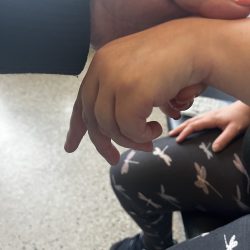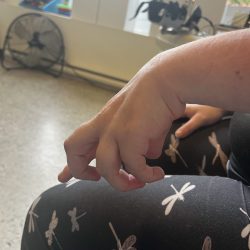Treatment of Muscle Spasticity
Regain mobility, comfort, and quality of life with specialized care
Spasticity is a common motor disorder observed after an injury to the central nervous system (brain, brainstem or spinal cord). It is characterized by an involuntary increase in muscle tone, often accompanied by spasms, stiffness, and resistance to movement.
➤ A Clear Scientific Explanation
In a healthy body, movements are finely regulated by a balance between activating and inhibiting signals transmitted by the nervous system.
When a neurological injury occurs (e.g., stroke, multiple sclerosis, or spinal cord injury), this balance is disrupted. The brain or spinal cord can no longer properly suppress reflex activity in the spinal cord, leading to muscle overactivity—this is spasticity.
Spasticity can develop within weeks or months after the neurological event and can negatively impact quality of life by:
- Interfering with voluntary movements (e.g., walking, grasping),
- Causing muscle or joint pain.


⚠️ Important: Spasticity and Clonus Are Not the Same!
⚡ Spasticity: Abnormal Muscle Stiffness
Spasticity is an involuntary increase in muscle tone that typically occurs during movement. Muscles become rigid or resistant, making certain actions difficult.
Signs may include:
- Difficulty bending or extending a limb
- A sensation of stiffness, especially during quick movements
- Fixed or flexed postures
🔁 Clonus: Rhythmic Muscle Jerks
Clonus, on the other hand, is a rhythmic involuntary movement: the muscle contracts and relaxes rapidly and repeatedly, often triggered by pressure or stretching.
Signs may include:
- Rapid, jerky trembling of the foot when the heel is pushed upward
- Uncontrolled repetitive movements after a stretch
- Usually localized (ankle, knee, wrist)
Both clonus and spasticity are caused by disrupted motor control circuits in the brain or spinal cord. They may occur together but often require different or complementary treatment approaches.
💡 Spasticity and Maladaptive Neuroplasticity: Understanding to Treat Better
Did you know that spasticity can be amplified by what’s known as maladaptive neuroplasticity?
The brain has an extraordinary ability to reorganize after injury—this is called neuroplasticity. However, when neural connections reform inefficiently, this can result in:
- Worsening of spasticity
- Ineffective compensation strategies
- Loss of functional mobility
- Chronic pain or persistent stiffness
This phenomenon, called maladaptive neuroplasticity, can hinder rehabilitation progress if not properly addressed.
Our Comprehensive and Personalized Approach
At Centre Neuro-Concept, we use our expertise in neurological rehabilitation and adaptive physical conditioning to support your recovery.
Our mission: To effectively reduce spasticity, improve motor function, and prevent complications.
Our therapeutic solutions include:
✅ Active and guided therapies to reduce stiffness and increase joint range
✅ Functional electrical stimulation (FES) to activate muscles in a controlled way and restore movement
✅ Robotic therapy to promote effective, repetitive motor patterns and enhance neuroplasticity
✅ Targeted exercises to retrain abnormal movements
✅ Stretching, mobilizations, and medical interventions to manage muscle tone
We work with you to restore smoother, more functional mobility and prevent the reinforcement of “faulty circuits” in the brain.
Early Intervention = Better Outcomes
The key to success? Early, consistent, and personalized care.
The sooner intervention begins, the greater the recovery potential.

